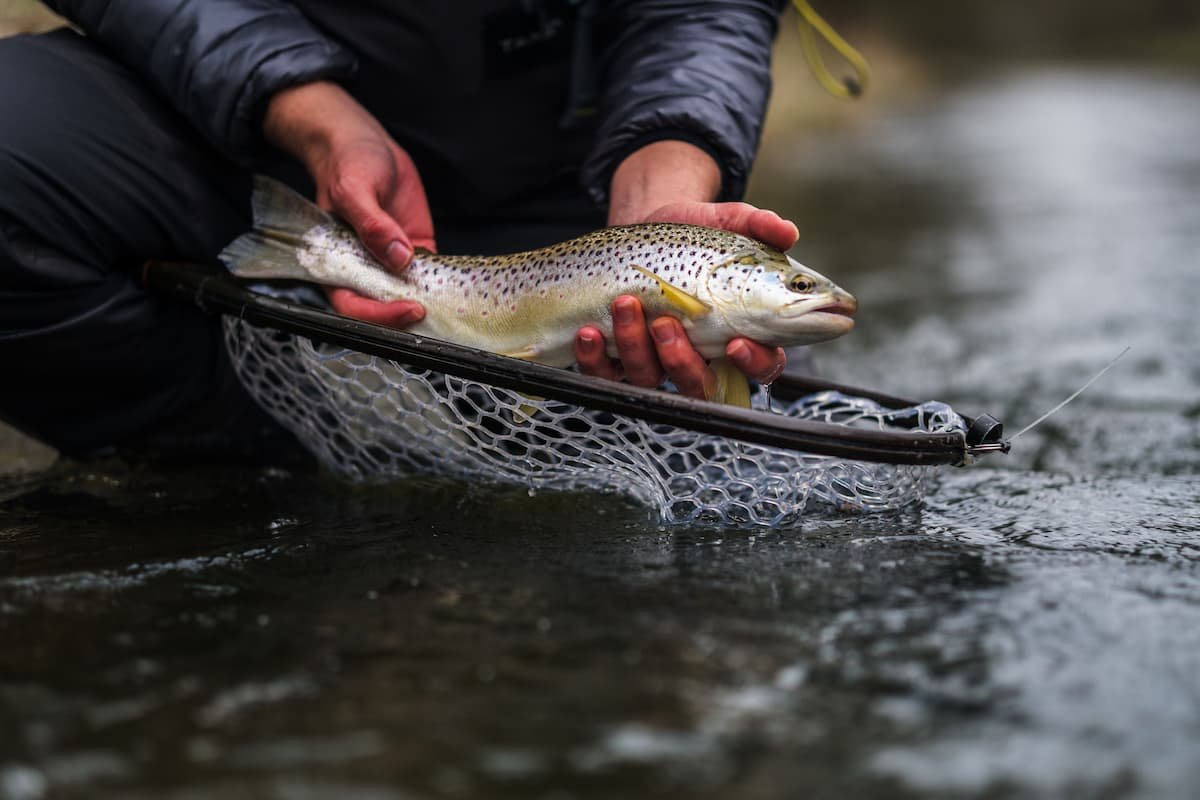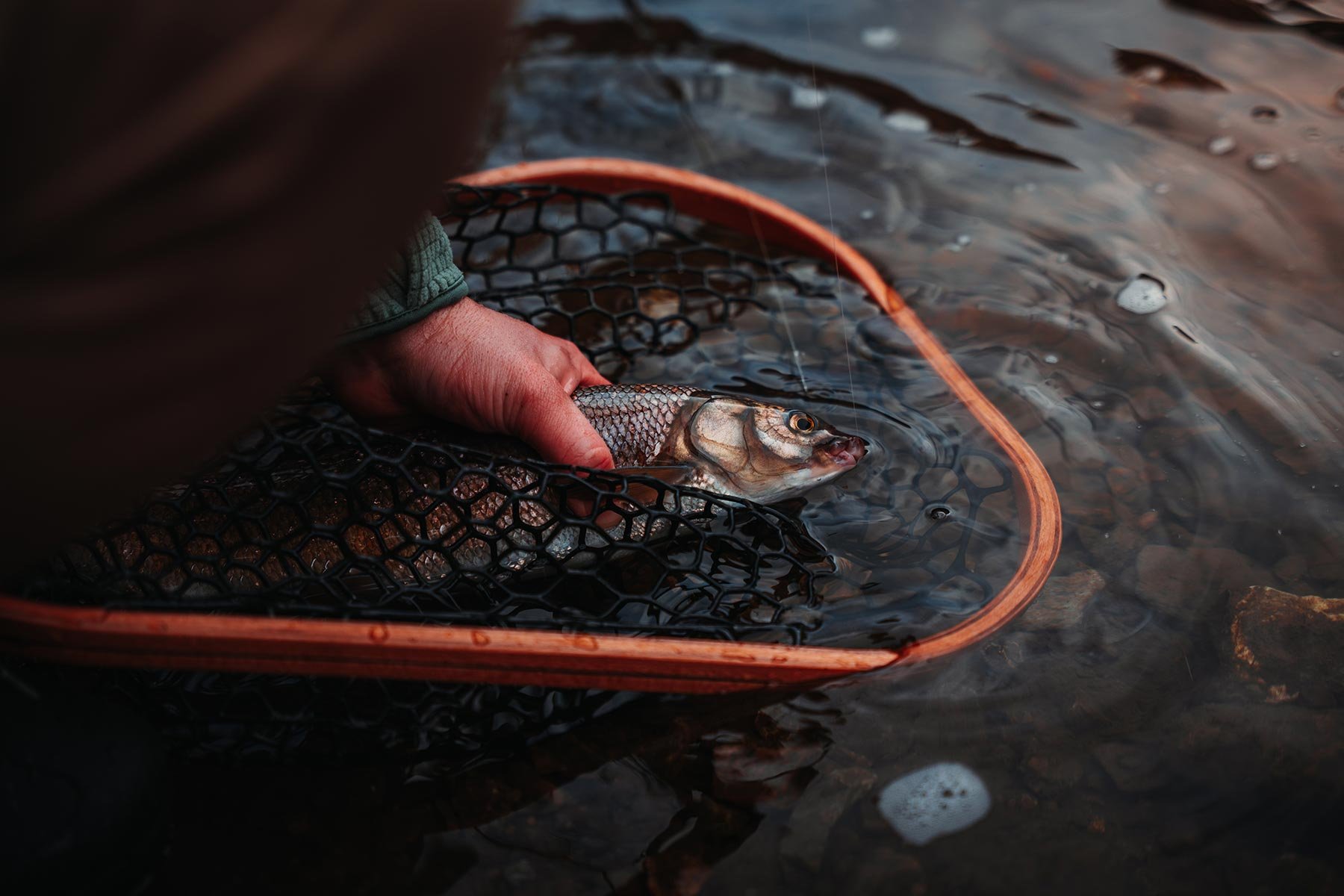Wooden Fishing Nets vs Other Materials: What’s Best for Trout?
Trout fishing isn’t just a pastime — for many, it’s a ritual. Each trip to the water is a chance to reconnect with nature, test your patience, and maybe, if you’re lucky, net a beauty worth talking about. But what you use to land that fish matters more than some anglers realize. A good net isn’t just about convenience; it plays a crucial role in fish safety, your own comfort, and the longevity of your gear.
With so many net materials out there — from wood to aluminum to carbon fiber — it’s easy to get overwhelmed. But if you’re someone who values gear with character, performance, and a little story behind it, it’s worth taking a closer look at your options.
What to Look For in a Trout Net
There’s more to a net than the mesh and a handle. The design affects how you move on the water, how safely you can release a fish, and even whether your net survives a season of rough use.
Start with the netting. Many experienced anglers now avoid traditional knotted nylon mesh. It’s too rough on fish, especially when you're practicing catch and release. Trout have a delicate slime coat that protects them from disease, and harsh nets can scrape it away. According to NOAA catch-and-release guidelines, the ideal choice is a soft, rubberized net with large mesh holes — it causes less damage and allows the fish to slip through the water more naturally when handled.
Trout Unlimited echoes that advice, warning against uncoated nylon and highlighting rubber or knotless mesh as the safer option for trout. You’ll see this echoed again in Keep Fish Wet's study on net materials, which backs up the science: when you reduce slime loss, you increase post-release survival rates.
Beyond the netting, frame material affects the weight, balance, and durability of your net. It’s one of the biggest differentiators between options — and the most hotly debated among anglers.
A Closer Look at Net Materials
Aluminum Nets
Aluminum nets are light, budget-friendly, and tough enough to handle most fishing situations. You’ll see a lot of these on the banks and in drift boats. They’re practical — no question about it. But they do come with trade-offs. They tend to dent easily, especially after repeated bumps and drops. Most importantly, they usually don’t float. If you drop one in the current, good luck getting it back.
Carbon Fiber & Composite Nets
Carbon fiber is the lightweight champ. These nets are strong, sleek, and perfect for anglers who hike deep into the backcountry and want to save every ounce. They’re often used by competition anglers or those who fish fast and light. The downside? They’re more expensive, and their ultramodern look isn’t for everyone. Some anglers find them a bit impersonal — more tech gear than heirloom.
Wooden Nets
Then there’s wood — the classic. A well-made wooden net has something the others don’t: character. These nets aren’t stamped out of molds or welded on an assembly line. They’re usually shaped, sanded, and finished by hand. That means each one is a little different. And if you’re holding something made with care, it changes how you fish with it. You slow down. You pay more attention. You appreciate the experience.
Beyond aesthetics, wooden nets are surprisingly practical. They tend to float naturally. They feel solid but not heavy. And when built from sustainable hardwoods, they’re a smart choice for anglers who care about the environment. Field & Stream’s guide to landing nets even named a handcrafted wood net as its “sustainability pick,” praising its balance of form, function, and eco-conscious sourcing.
If you’re curious about what that looks like in practice, check out our Gunnie & Finn 12" landing net — a compact, handcrafted option that’s ideal for tight streams or minimalist setups. Or take a look at our Ante Up Fly Box, which pairs beautifully with one of our nets for a lightweight but rugged fly-fishing kit.
Fish Safety Is Angler Responsibility
We don’t always talk about it, but as anglers, we have a responsibility to the fish we chase. If you're practicing catch and release — and many trout anglers are — your net choice directly affects fish survival. According to Orvis expert discussion on landing nets, flat-bottom rubber nets are some of the best tools for safely supporting fish during handling and release. They let the fish rest naturally in the water, reducing stress and damage.
Even small changes, like choosing the right mesh or keeping the fish wet while you remove the hook, can dramatically improve the outcome. For more tips on responsible angling, NOAA’s guidelines on best catch-and-release practices are a great starting point.
What’s the Right Net for You?
It depends on how you fish. Wade anglers might want something shorter, easier to carry, and quick to deploy. Float anglers may opt for a longer handle to reach fish from a drift boat or kayak. Either way, your gear should feel natural — not clunky or awkward.
If you’re someone who hikes to your spot and values minimal weight, carbon fiber might make sense. If you’re tough on gear and fish hard in rough water, aluminum’s durability could be worth the trade-off. But if you want gear that respects the experience — something functional, beautiful, and built to last — a wooden net just might be your answer.
Each Tried & Trout net is handcrafted in Colorado from sustainable wood, designed to hold up season after season, and finished to age gracefully with use. They’re not mass-produced. They're made with care. That’s part of the experience.
Final Thoughts
There’s no one-size-fits-all answer when it comes to landing nets — and that’s the point. The best net for trout fishing isn’t just about specs or stats. It’s about how it feels in your hand, how it treats the fish you land, and how it holds up over time.
You don’t need to choose wood. But if you’ve never held a handcrafted wooden net before, you might be surprised by what it adds to your time on the water.



